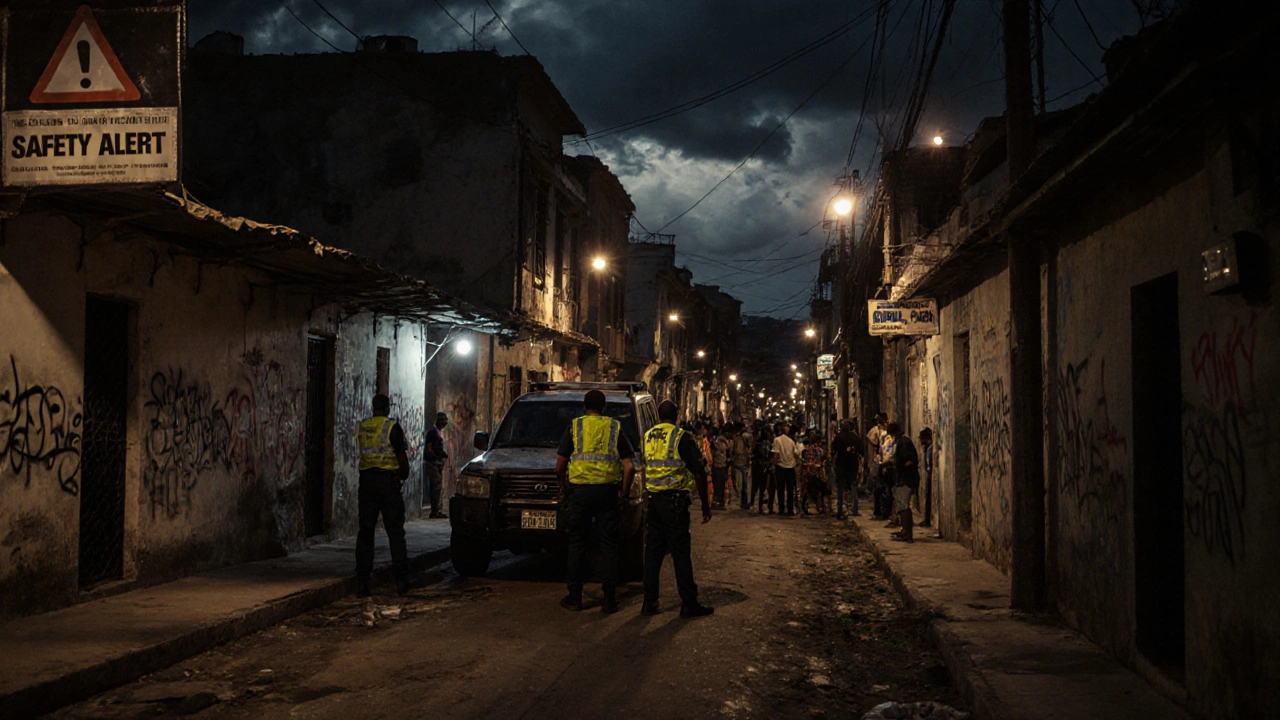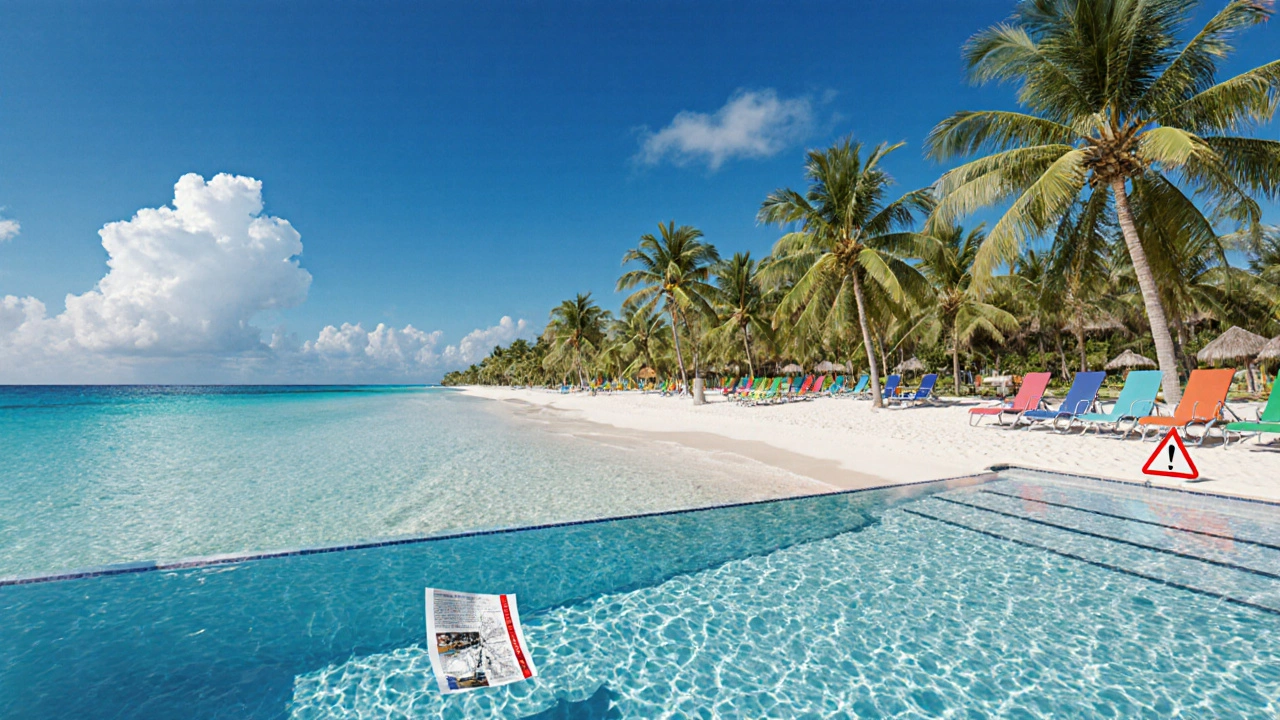Caribbean Travel Safety Calculator
Calculate Your Personalized Safety Score
Customize the importance of each safety factor to see which Caribbean islands are safest for your travel preferences.
How to use this tool
Adjust the sliders to weight factors based on your personal priorities. Higher values on a slider mean that factor is more important to you. The tool calculates a safety score for each island based on your preferences.
Lowest score = safest destination for your preferences; highest score = most risky.
When you picture a Caribbean getaway you probably see turquoise water, palm trees, and endless sunshine. But not every island offers the same level of safety. If you’re willing to trade a bit of peace of mind for an off‑the‑beaten‑path adventure, you need to know which destinations carry the highest risks. In this guide we break down the data, explain why one island consistently ranks as the least safe, and give you practical tips to stay out of trouble wherever you decide to go.
Key Takeaways
- The island that repeatedly tops safety‑risk rankings is Haiti.
- High crime rates, political unrest, and frequent natural disasters combine to make travel hazardous.
- Travelers can lower risk by avoiding night travel, staying in vetted hotels, and keeping emergency contacts handy.
- If safety is a priority, consider alternatives like the Bahamas, Barbados, or SaintLucia, which score much lower on risk indices.
How Safety Is Measured in the Caribbean
Before naming the least safe island we need a framework. Safety scores typically blend four main pillars:
- Crime statistics - homicide, robberies, and assaults per 100,000 residents.
- Political stability - frequency of protests, coups, or government shutdowns.
- Natural hazard exposure - earthquake zones, hurricane paths, and volcano activity.
- Health infrastructure - access to clean water, reliable hospitals, and disease‑prevention programs.
International bodies such as the United Nations Office on Drugs and Crime (UNODC) and the World Health Organization (WHO) publish the raw data; travel‑site aggregators like Numbeo and the Global Peace Index then turn those numbers into a composite safety rating.
Why Haiti Tops the List
When you line up the Caribbean islands against the four safety pillars, Haiti is the island with the highest overall risk score, largely because it scores poorly on every single pillar. Let’s unpack each factor.
Crime Levels
Haiti’s homicide rate sits around 15 per 100,000 people-more than three times the regional average. Street robbery, car jacking, and kidnappings are common in Port‑au‑Prince and popular tourist zones like Jacmel. A 2023 travel‑alert issued by the U.S. State Department warned citizens to avoid non‑essential travel to Haiti due to “violent crime and civil unrest.”
Political Instability
Since the 2010 earthquake, Haiti has experienced a revolving door of governments, frequent protests, and occasional armed clashes between rival militia groups. In 2022 a sudden change in prime‑ministerial leadership sparked weeks of street fighting that disrupted airport operations and left parts of the capital without power.
Natural Hazards
Haiti sits on the Caribbean Plate’s most active seismic zone. Earthquakes of magnitude 6.0 or higher have struck within the last decade, notably the devastating 7.0 quake in 2021. The island also lies directly in the Atlantic hurricane belt; in the past 20years it has endured six Category4 or higher storms, each causing massive infrastructure damage.
Health Infrastructure
Hospital capacity is limited, especially outside major cities. During the cholera outbreak of 2010‑2019, clinics were overwhelmed and clean water was scarce. Even routine medical care can be difficult to access, and most travelers need to bring their own supply of prescription medication.

Comparing Safety Across Popular Islands
| Island | Homicides per 100k | Political Stability (0‑10) | Annual Hurricanes (≥Category3) | Health Care Index (0‑100) |
|---|---|---|---|---|
| Haiti | 15.2 | 2 | 2.1 | 38 |
| Dominican Republic | 6.4 | 5 | 1.4 | 65 |
| Jamaica | 5.9 | 6 | 1.2 | 70 |
| Puerto Rico | 4.8 | 7 | 2.0 | 78 |
| Cuba | 3.7 | 6 | 0.8 | 72 |
Numbers speak for themselves: Haiti trails every competitor on three of the four pillars, confirming its status as the least safe Caribbean island.
What Travelers Can Do If They Still Want to Visit Haiti
Some adventurous souls are drawn to Haiti’s vibrant culture, historic forts, and stunning waterfalls. If you decide the experience outweighs the risk, follow these hardened‑law‑survival tips:
- Book through a reputable tour operator. Companies that employ local guides familiar with safe routes dramatically reduce exposure to crime.
- Stay in the well‑guarded districts of Pétion‑Ville or Petion‑Bout, where most upscale hotels keep private security.
- Avoid travelling after dark, especially on unpaved roads. Most incidents happen between 8pm and 2am.
- Carry only a copy of your passport, keep the original locked in your hotel safe, and use a discreet money belt.
- Register your itinerary with your home country’s embassy (or the nearest consulate) and keep emergency numbers handy: local police (114), U.S. embassy in Port‑au‑Prince (via regional office in SantoDomingo).

Safer Caribbean Alternatives
If safety tops your checklist, turn your gaze to islands that consistently rank high on peace and health metrics. Here are three that blend low risk with beach bliss:
- Bahamas - homicide rate under 2 per 100k, stable democracy, modern medical facilities.
- Barbados - renowned for friendly locals, excellent tourism infrastructure, and a strong hurricane‑resilience program.
- SaintLucia - low crime, well‑maintained resorts, and a thriving wellness tourism scene.
All three islands offer a mix of luxury resorts, budget hostels, and local eateries, letting you tailor the trip without worrying about headline‑grabbing danger.
Quick Safety Checklist for Caribbean Trips
- Check the latest travel advisory from your government.
- Research recent crime reports for your destination city.
- Purchase travel insurance that covers medical evacuation.
- Pack a basic first‑aid kit and any prescription meds.
- Share your daily itinerary with a trusted friend or family member.
- Learn a few emergency phrases in the local language (e.g., "Help!", "Police!").
- Keep copies of important documents in a cloud‑based folder.
Frequently Asked Questions
Is Haiti safe for solo travelers?
Solo travel in Haiti is possible but carries higher risk than in most Caribbean islands. Women traveling alone should be especially cautious, avoid night movement, and stay in well‑reviewed accommodations with security staff.
How do crime rates in the Dominican Republic compare to Haiti?
The Dominican Republic’s homicide rate of about 6 per 100k is roughly a third of Haiti’s. While petty theft occurs in tourist zones, violent crime is less frequent and usually tied to specific neighborhoods rather than the entire island.
Do natural disasters affect safety on Caribbean islands?
Absolutely. Hurricanes can knock out power, flood roads, and strain medical services. Haiti’s limited infrastructure means recovery is slower, so a storm can turn a short inconvenience into a prolonged emergency.
What should I do if I get caught in a protest in Haiti?
Leave the area immediately, avoid cameras, and seek shelter in a hotel or embassy‑designated safe zone. Keep low‑profile, do not engage, and contact your consular office as soon as you can.
Are there travel insurance policies that cover political unrest?
Yes, many insurers offer “war‑and‑terror” or “political risk” extensions. Check the fine print: coverage typically includes evacuation, lost luggage, and medical expenses arising from protests or coups.
